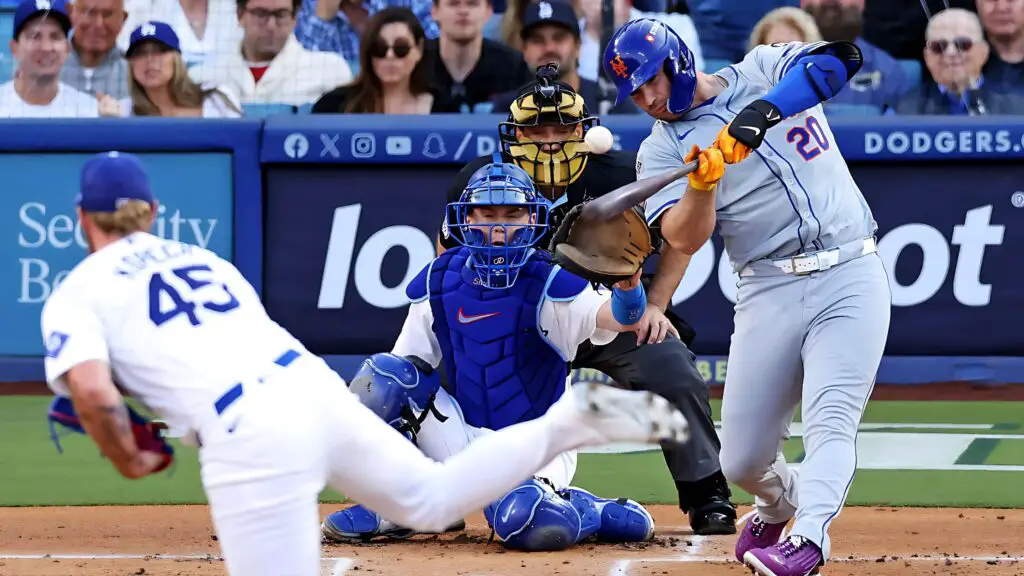Parents need to ensure their children use proper safety gear and receive adequate training in youth baseball. Supervision during games and practices is crucial.
Youth baseball offers numerous benefits, including physical activity, teamwork, and discipline. Safety is a top priority to prevent injuries and ensure a positive experience. Parents should focus on providing the right equipment, such as helmets, face guards, and padded clothing.
Proper coaching and training techniques are essential to teach children the correct way to play and avoid common injuries. Regular supervision by coaches and parents helps maintain a safe environment. By prioritizing these aspects, parents can help their children enjoy the game while staying safe and healthy.
Common Injuries
Understanding common injuries in youth baseball is crucial for parents. Knowing what to watch for can help keep your child safe. This section covers the types of injuries, their frequency, and key statistics.

Types Of Injuries
Youth baseball players can face several types of injuries. These injuries can range from minor to severe. Here are some of the most common ones:
- Sprains and Strains: These affect muscles and ligaments. They happen due to overuse or sudden movements.
- Fractures: Broken bones can occur from falls or direct impacts.
- Concussions: Head injuries are common from collisions or being hit by the ball.
- Overuse Injuries: These include Little League elbow and shoulder problems. They result from repetitive motions like throwing.
- Abrasions and Cuts: These happen when players slide or collide.
Frequency And Statistics
Statistics show the frequency of injuries in youth baseball. Understanding these can help parents take preventive measures.
| Type of Injury | Frequency |
|---|---|
| Sprains and Strains | 35% |
| Fractures | 20% |
| Concussions | 10% |
| Overuse Injuries | 25% |
| Abrasions and Cuts | 10% |
Sprains and strains are the most frequent injuries. They account for 35% of all youth baseball injuries. Fractures make up 20% of injuries. Overuse injuries are also common, making up 25% of cases. Concussions and abrasions each account for 10% of injuries.
Parents should be aware of these statistics. Knowing them can help in recognizing and preventing injuries.
Protective Gear
Keeping kids safe in youth baseball is very important. Protective gear is essential to prevent injuries. It helps young players stay safe while having fun. Let’s explore the key aspects of protective gear.

Essential Equipment
Every young player needs certain gear to stay safe. Here is a list of the most essential equipment:
- Helmet – Protects the head from injuries.
- Chest Protector – Shields the chest and ribs.
- Shin Guards – Guards the shins from fastballs.
- Gloves – Protects hands and improves grip.
- Batting Gloves – Reduces vibrations and improves grip.
- Protective Cup – Essential for male players.
Proper Fit And Usage
Getting the right fit for each piece of gear is crucial. Proper fit ensures maximum protection and comfort:
- Helmet – Should fit snugly without being too tight.
- Chest Protector – Should cover the entire chest area.
- Shin Guards – Should extend from knee to ankle.
- Gloves – Should fit comfortably with no extra space.
- Batting Gloves – Should provide a snug fit for better control.
Parents should regularly check the gear for wear and tear. Replace any damaged or worn-out items to ensure safety. Proper maintenance of gear keeps kids safe and comfortable.
Warm-up And Stretching
Ensuring your child warms up and stretches before a baseball game is crucial. It helps prevent injuries and improves performance. Let’s explore a proper pre-game routine and the benefits of stretching.
Pre-game Routine
A structured pre-game routine sets the tone for safe play. Here are the steps:
- Light Jogging: Start with 5-10 minutes of light jogging. This increases heart rate and blood flow.
- Dynamic Stretches: Include arm circles, leg swings, and torso twists. These movements prepare muscles for activity.
- Throwing Warm-Up: Begin with short-distance throws. Gradually increase the distance.
- Team Drills: Conduct team drills focusing on coordination and teamwork.
Benefits Of Stretching
Stretching offers several key benefits for young baseball players:
- Injury Prevention: Stretching reduces the risk of muscle strains and sprains.
- Improved Flexibility: Flexibility enhances range of motion. This helps in better performance.
- Better Coordination: Stretching improves muscle coordination. This is vital for precise movements.
- Enhanced Blood Flow: It increases blood flow to muscles. This promotes quicker recovery.
Coaching And Supervision
Youth baseball is a beloved sport for many families. Ensuring the safety of young athletes is crucial. Two key factors in baseball safety are coaching and supervision. Proper guidance and oversight can prevent injuries and create a positive experience.
Role Of Coaches
Coaches play a vital role in youth baseball. They teach skills and ensure safety. A good coach knows the rules and uses proper techniques.
- Training: Coaches should have training in first aid and CPR.
- Equipment Checks: They must inspect gear for safety.
- Warm-ups: Coaches should lead warm-up exercises to prevent injuries.
Coaches also need to communicate well. They should explain drills and safety rules clearly. Good communication builds trust and keeps everyone safe.
Parental Involvement
Parents play an important role too. They should stay involved and informed. Being present at practices and games can help ensure safety.
- Attend Practices: Watch for any safety issues.
- Know the Coach: Understand the coach’s safety practices.
- Encourage Safe Play: Remind kids to follow safety rules.
Parents should also ensure their child has the right equipment. Properly fitting gear can prevent many injuries.
| Role | Responsibility |
|---|---|
| Coaches | Teach skills, ensure safety, inspect equipment |
| Parents | Stay involved, encourage safe play, ensure proper gear |
With good coaching and active parental involvement, youth baseball can be both fun and safe.
Field Safety
Youth baseball is a beloved sport. It promotes physical fitness and teamwork. But safety must come first. Field safety is crucial. Let’s explore key aspects of field safety.

Safe Playing Conditions
Safe playing conditions are vital. Ensure the field is well-maintained. Remove any debris or obstacles. Check the infield and outfield for hazards. A smooth, level surface prevents injuries.
Inspect the bases and pitcher’s mound. They should be secure and stable. Loose bases can cause trips and falls. The dugouts should be clean and organized. A clutter-free dugout reduces accidents.
Weather Considerations
Weather plays a big role in field safety. Always check the forecast before games. Avoid playing in extreme heat. Extreme heat can lead to heat exhaustion or heatstroke.
If lightning is present, stop the game immediately. Lightning poses a serious risk. Seek shelter in a safe, enclosed area. Resume play only when it’s safe.
Rain can make the field slippery. Wet fields increase the risk of falls. Postpone the game if the field is too wet. Safety should always come first.
| Condition | Action |
|---|---|
| Debris on Field | Remove Immediately |
| Extreme Heat | Hydrate and Rest Frequently |
| Lightning | Seek Shelter |
| Wet Field | Postpone Game |
Injury Prevention Tips
Ensuring the safety of young athletes is crucial in youth baseball. Parents must be proactive in preventing injuries. Implementing effective injury prevention strategies can help keep kids safe and enjoying the game.
Strength And Conditioning
Strength and conditioning are vital for young athletes. Proper training enhances muscle strength and flexibility.
- Encourage regular stretching to maintain flexibility.
- Incorporate age-appropriate strength training exercises.
- Ensure adequate rest between workouts to prevent fatigue.
Below is a simple strength and conditioning routine:
| Exercise | Repetitions |
|---|---|
| Push-ups | 10-15 |
| Squats | 10-15 |
| Plank | 30 seconds |
Proper Technique
Using proper technique helps prevent injuries. Coaches should teach kids the right way to play.
- Ensure proper throwing mechanics to avoid arm injuries.
- Teach correct batting stance and grip.
- Use appropriate fielding techniques to prevent collisions.
Regular practice helps reinforce these techniques. It also builds confidence in young players.
Emergency Preparedness
Ensuring the safety of young baseball players is critical. Emergency preparedness is a key aspect of this. Being prepared can prevent minor injuries from becoming major issues. Parents should be well-informed about basic first aid, and how to handle emergencies.
First Aid Basics
Parents should know basic first aid techniques. This includes how to treat cuts, bruises, and sprains. Here are some essential first aid items:
- Band-aids
- Antiseptic wipes
- Ice packs
- Elastic bandages
- Gauze and tape
These items should be in your first aid kit. Knowing how to use them is equally important. Parents can take a first aid course to gain confidence.
Emergency Contacts
Always have a list of emergency contacts ready. This should include:
| Contact | Phone Number |
|---|---|
| Coach | 555-123-4567 |
| Local Hospital | 555-987-6543 |
| Family Doctor | 555-555-5555 |
| Emergency Services | 911 |
Keep this list in an accessible place. Share it with other parents and coaches. This ensures everyone knows who to contact in an emergency.
Emergency preparedness can save lives. Make sure you are ready. Your child’s safety depends on it.
Mental Health
Parents should pay attention to their children’s mental health in youth baseball. The pressures of the game can affect their well-being. By supporting mental health, we help children enjoy the sport and grow positively.

Stress Management
Baseball can bring stress for young players. They may feel pressure to perform well. It’s vital to help them manage this stress.
- Encourage regular breaks during practice.
- Teach relaxation techniques like deep breathing.
- Ensure they get enough sleep and rest.
- Promote hobbies outside baseball for balance.
Parents can also talk to their kids about their feelings. Open conversations can reduce stress and build trust.
Encouraging A Positive Attitude
A positive attitude can improve a child’s experience in baseball. It helps them enjoy the game more and handle setbacks better.
- Celebrate small successes and efforts.
- Teach them that mistakes are part of learning.
- Encourage teamwork and support for teammates.
- Model a positive attitude yourself.
Using these strategies, parents can build a child’s resilience and joy in playing baseball.
| Strategy | Details |
|---|---|
| Regular Breaks | Short breaks during practice prevent burnout. |
| Relaxation Techniques | Teach deep breathing to calm nerves. |
| Celebrate Success | Highlight efforts, not just wins. |
| Model Positivity | Show a positive attitude in difficult situations. |
Resources And Support
Ensuring the safety of young baseball players is crucial. Parents need access to reliable resources and support to keep their children safe. This section offers valuable information on organizations and literature that can help.
Helpful Organizations
Various organizations provide resources for youth baseball safety. Here are some helpful ones:
- Little League International: Offers safety guidelines and training programs.
- USA Baseball: Provides educational materials for parents and coaches.
- National Alliance for Youth Sports (NAYS): Promotes best practices in youth sports safety.
Further Reading
These resources offer in-depth information on youth baseball safety:
- Little League Safety Guide: Comprehensive guide on player safety.
- USA Baseball Online Education Center: Courses on safe coaching practices.
- NAYS Parent Resources: Tips for parents on keeping kids safe in sports.
Frequently Asked Questions
What Equipment Is Essential For Youth Baseball Safety?
Proper equipment includes a helmet, glove, and protective gear. These items help prevent injuries during play. Always ensure equipment fits well.
How Can Parents Prevent Baseball Injuries?
Parents can prevent injuries by ensuring proper warm-ups and stretches. Encourage the use of safety gear and teach correct techniques.
What Are Common Youth Baseball Injuries?
Common injuries include sprains, fractures, and concussions. Proper training and protective equipment can reduce these risks significantly.
Are Baseball Helmets Necessary For Safety?
Yes, helmets are crucial for protecting against head injuries. Ensure the helmet fits well and meets safety standards.
Conclusion
Ensuring youth baseball safety is crucial for parents. Equip your child with proper gear and knowledge. Promote safe practices and stay informed. Your vigilance helps prevent injuries and fosters a positive experience. Prioritize safety to keep the game fun and secure for everyone involved.


